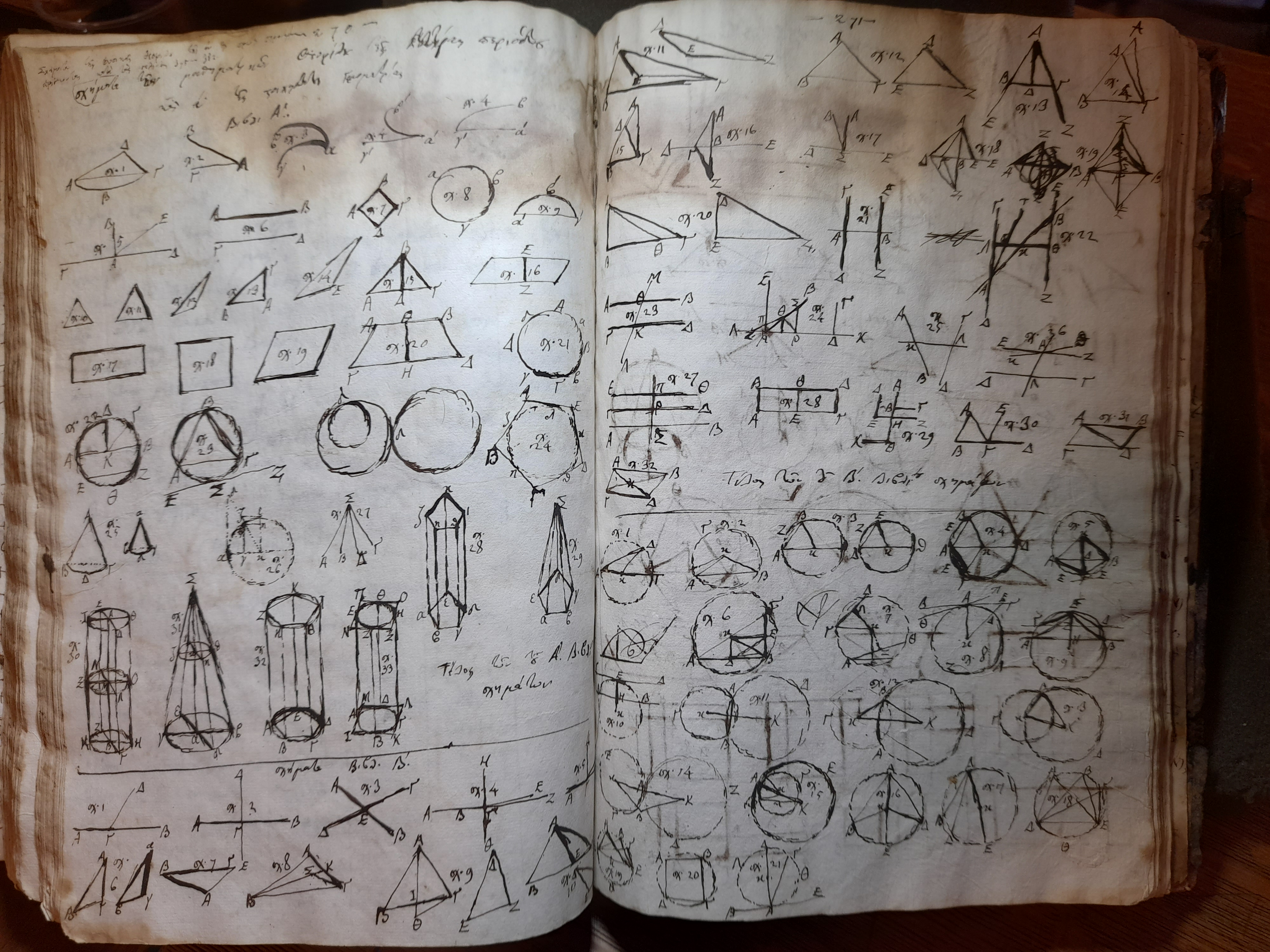A new manuscript in the collections of the Gennadius Library: a source of history of 19th-century Greek education
A very important document for the history of Greek education was recently acquired by the Gennadius library: a handwritten notebook (MSS 827.5) that belonged to Germanos (né Niketas) Michaelos, a teacher born on the island of Syme in 1791.
As we learn from internal evidence in the manuscript itself, the owner studied with Theophilos Kaires and Gregorios Saraphes at the school of Kydonies (Ayvalik). Ιn 1816 thanks to the recommendations of his teachers, he was hired as a teacher at the Greek school of Ainos (Enez), Thrace.

The notebook, consisting of 197 leaves, covers the period from 1817 to 1847; in it Germanos took detailed notes on mathematics, algebra, and geometry, obviously the material that he taught in the schools he was employed. He also added several personal notes, mainly drafts of letters and other documents. These documents offer information about various Greek educational centers of the Ottoman Empire (Kydonies, Ainos or Constantinople), about teaching methods, books, salaries, but also about the life of teachers, the difficulties they faced, their social networks and everyday life. For instance, in 1820 Germanos was elected as a teacher at the school of Patmos by the 'furriers guild' of Constantinople. In March 1821, while he was traveling to Constantinople to get the relevant papers, his plans were cancelled due to the outbreak of the Greek Revolution. The author describes the difficulties he and the Greek orthodox people at large faced during this period, as the evil was not "occasional but common to many Greeks of various professions and ranks" (p. 217).
In 1829, he mentions the persecution that Patriarch Agathangelos initiated against the ‘καμηλαυχοῦντες’ (the term most probably refers to the celibate clergy) who remained in Constantinople without specific ecclesiastical duties. Forced to leave the school where he taught, Germanos settled in the monastery of Agios Georgios of Krimna on the island of Chalke (Heybeliada), but he complains about having to pay rent. During this period he was forced to deliver courses remotely, by correspondence; from his notes we gather important information about the courses, books, and methodology he uses, but also suggestions and exhortations to his students and their parents, as well as prices and items that he is in need of.
The pages of Germanos's handwritten notebook bring to life a period of Greek educational history as they showcase a plethora of information about courses, books, teachers and students, but also prices, material goods, needs, expectations and provide snapshots of the daily life of Greeks in the Ottoman Empire at the beginning of the 19th century.